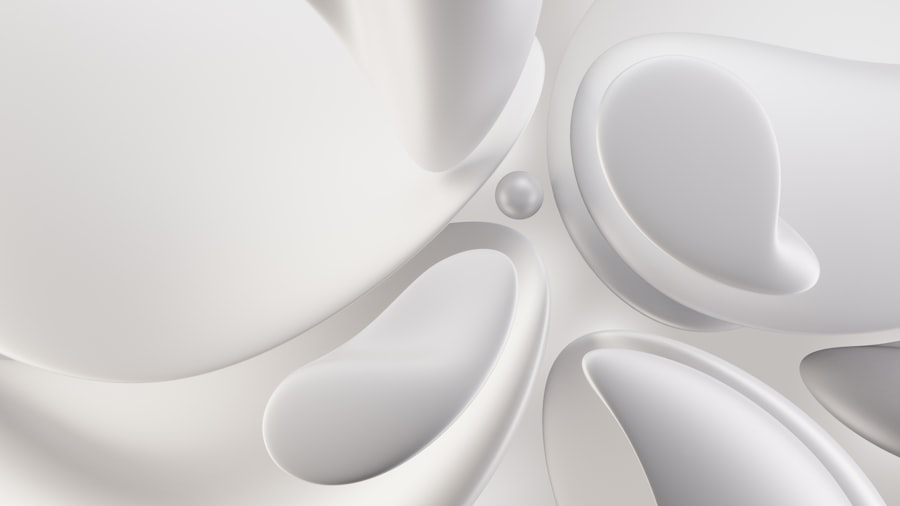Digital minimalism is a philosophy that encourages you to intentionally curate your digital life, focusing on what truly adds value to your existence while eliminating distractions. In a world where technology is omnipresent, this approach becomes increasingly vital. You may find yourself overwhelmed by the constant barrage of notifications, emails, and social media updates, leading to a sense of chaos rather than clarity.
By adopting digital minimalism, you can reclaim your time and mental space, allowing for deeper connections and more meaningful experiences. The importance of digital minimalism lies in its potential to enhance your quality of life. It’s not merely about reducing screen time; it’s about fostering a more intentional relationship with technology.
When you prioritize what matters most, you create room for personal growth, creativity, and genuine interactions. This shift in perspective can lead to a more fulfilling life, where technology serves as a tool rather than a source of stress. Embracing digital minimalism can help you navigate the complexities of modern life with greater ease and purpose.
Key Takeaways
- Digital minimalism is about intentionally reducing the time and attention spent on digital devices and platforms to focus on what truly matters.
- Digital overload can have negative effects on mental health, including increased stress, anxiety, and decreased attention span.
- Embracing digital minimalism can lead to improved mental clarity, increased focus, and reduced feelings of overwhelm.
- Practical steps for embracing digital minimalism include setting boundaries, establishing healthy digital habits, and creating a minimalist digital environment.
- Disconnecting from digital devices can lead to finding peace, experiencing the joy of missing out (JOMO), and using technology with intention for mindful consumption.
The Impact of Digital Overload on Mental Health
Digital overload can have profound effects on your mental health, often manifesting as anxiety, stress, and even depression. The incessant notifications and the pressure to stay connected can create a sense of urgency that is hard to escape. You might find yourself constantly checking your phone or feeling compelled to respond to messages immediately, which can lead to feelings of inadequacy and overwhelm.
This cycle of digital engagement can detract from your ability to focus on the present moment and enjoy life’s simple pleasures. Moreover, the comparison culture fostered by social media can exacerbate feelings of inadequacy. You may scroll through curated images of others’ lives, leading to unrealistic expectations and self-doubt.
The constant exposure to idealized versions of reality can distort your self-image and contribute to a negative mindset. Recognizing the impact of digital overload on your mental health is the first step toward making meaningful changes that promote well-being and resilience.
How Digital Minimalism Can Improve Mental Clarity

Embracing digital minimalism can significantly enhance your mental clarity by reducing distractions and fostering a more focused mindset. When you intentionally limit your digital consumption, you create space for deeper thinking and creativity. You may notice that with fewer distractions, your ability to concentrate improves, allowing you to engage more fully in tasks and activities that matter to you.
This newfound clarity can lead to better decision-making and increased productivity in both personal and professional realms. Additionally, digital minimalism encourages you to prioritize quality over quantity in your digital interactions. By curating your online experiences, you can focus on content that inspires and uplifts you rather than mindlessly consuming information that adds little value.
This intentional approach not only enhances your mental clarity but also cultivates a sense of purpose in your digital life.
Practical Steps for Embracing Digital Minimalism in Your Daily Life
| Practical Steps for Embracing Digital Minimalism in Your Daily Life |
|---|
| Acknowledge the problem |
| Set clear boundaries |
| Declutter your digital space |
| Establish tech-free zones |
| Practice mindfulness |
| Engage in offline activities |
| Limit social media usage |
To embrace digital minimalism in your daily life, start by assessing your current digital habits. Take note of how much time you spend on various platforms and identify which activities contribute positively to your life and which ones drain your energy. You might consider using apps that track screen time or journaling about your digital experiences to gain insight into your habits.
This self-reflection will help you make informed decisions about where to cut back. Once you’ve identified areas for improvement, set specific goals for reducing digital clutter. For instance, you could designate certain times of the day as tech-free zones or limit your social media usage to a few minutes each day.
Additionally, consider decluttering your digital devices by deleting unused apps and organizing files. By simplifying your digital environment, you create a more serene space that supports your journey toward minimalism.
Setting Boundaries: Establishing Healthy Digital Habits
Establishing healthy digital habits is crucial for maintaining balance in a tech-driven world. You might start by setting boundaries around when and how you use technology. For example, consider implementing a “digital sunset,” where you disconnect from screens an hour before bedtime to promote better sleep quality.
This practice not only helps you unwind but also allows for more meaningful interactions with loved ones during the evening. Another effective strategy is to create designated times for checking emails or social media rather than allowing these activities to interrupt your day continuously. By batching these tasks into specific time slots, you can maintain focus on other important activities without the constant pull of notifications.
Setting boundaries empowers you to take control of your digital life rather than letting it control you.
The Benefits of Disconnecting: Finding Peace in Unplugging

Disconnecting from technology can lead to profound benefits for your mental health and overall well-being. When you take time away from screens, you may find that you experience increased feelings of peace and tranquility. This break allows you to reconnect with yourself and the world around you, fostering mindfulness and presence in your daily life.
You might discover new hobbies or interests that had been overshadowed by digital distractions, enriching your life in unexpected ways. Moreover, unplugging can enhance your relationships with others. When you’re not constantly checking your phone or scrolling through social media, you’re more likely to engage in meaningful conversations and connect with those around you on a deeper level.
This quality time spent with family and friends can strengthen bonds and create lasting memories that far outweigh the fleeting satisfaction of online interactions.
Mindful Consumption: Using Technology with Intention
Mindful consumption is an essential aspect of digital minimalism that encourages you to use technology with intention and purpose. Instead of mindlessly scrolling through feeds or binge-watching shows, take a moment to consider how each digital interaction aligns with your values and goals. You might ask yourself whether the content you’re consuming enriches your life or simply serves as a distraction.
To practice mindful consumption, curate your online spaces by following accounts that inspire and uplift you while unfollowing those that contribute to negativity or comparison. Additionally, consider setting limits on how much time you spend on certain platforms or engaging with specific types of content. By being intentional about what you consume digitally, you can create a more positive online experience that supports your overall well-being.
Creating a Minimalist Digital Environment: Simplifying Your Online Presence
Creating a minimalist digital environment involves simplifying your online presence to reduce clutter and enhance focus. Start by decluttering your social media accounts—unfollow accounts that no longer resonate with you or contribute positively to your life. This process not only streamlines your feed but also allows for a more curated experience that aligns with your interests and values.
In addition to social media, consider organizing your email inbox by unsubscribing from newsletters or promotional emails that no longer serve a purpose. A clean inbox can significantly reduce feelings of overwhelm and help you stay focused on important communications. By taking these steps to simplify your online presence, you’ll create a more serene digital landscape that supports your journey toward minimalism.
Finding Balance: Incorporating Digital Minimalism into a Tech-Driven World
Incorporating digital minimalism into a tech-driven world requires finding balance between embracing technology’s benefits and minimizing its drawbacks. You might start by identifying specific areas where technology enhances your life—such as staying connected with loved ones or accessing valuable information—and focusing on those aspects while reducing time spent on less meaningful activities.
By consciously choosing how you spend your time, you can cultivate a healthier relationship with technology while still enjoying its advantages. Striking this balance allows you to navigate the complexities of modern life without feeling overwhelmed by digital distractions.
Overcoming FOMO: Embracing JOMO (Joy of Missing Out) through Digital Minimalism
Overcoming the fear of missing out (FOMO) is an essential aspect of embracing digital minimalism. In a world where social media often highlights curated experiences, it’s easy to feel left out or inadequate when you’re not participating in every trend or event. However, by adopting the philosophy of JOMO (the joy of missing out), you can shift your perspective toward appreciating the present moment rather than constantly seeking external validation.
Embracing JOMO involves recognizing that it’s okay to miss out on certain events or experiences if they don’t align with your values or priorities. Instead of feeling pressured to be everywhere at once, focus on what truly brings you joy and fulfillment in your life. This mindset shift allows you to cultivate deeper connections with yourself and those around you while freeing yourself from the anxiety associated with FOMO.
The Long-Term Effects of Digital Minimalism on Mental Clarity and Overall Well-Being
The long-term effects of embracing digital minimalism can be transformative for both mental clarity and overall well-being. As you cultivate healthier digital habits and prioritize meaningful interactions, you’ll likely experience increased focus, creativity, and emotional resilience over time. This sustained practice can lead to improved mental health outcomes, including reduced anxiety and enhanced self-esteem.
Moreover, the benefits extend beyond individual well-being; embracing digital minimalism can foster stronger relationships and community connections as well. By prioritizing quality interactions over quantity, you’ll create deeper bonds with those around you while contributing positively to the collective mental health of society. Ultimately, the journey toward digital minimalism is not just about reducing screen time; it’s about enriching your life through intentional choices that promote clarity, connection, and fulfillment in an increasingly complex world.
In today’s hyper-connected world, the constant barrage of notifications, emails, and social media updates can be overwhelming, leading to increased stress and decreased productivity. Adopting a digital minimalism approach can help individuals reclaim their time and focus by intentionally curating their digital interactions. According to an article on Unplugged Psych, digital minimalism encourages people to evaluate the necessity and impact of their digital tools, allowing them to prioritize meaningful connections and activities. By reducing digital clutter, individuals can foster a more balanced and intentional lifestyle, ultimately enhancing their mental well-being and overall quality of life.
LEARN WHY Your Brain Isn’t Addicted to Likes; the Algorithm Gaslights You Daily, Hard.
FAQs
What is digital minimalism?
Digital minimalism is a philosophy that encourages individuals to intentionally reduce the time and attention they spend on digital devices and platforms, in order to focus on what truly matters to them.
Why do I need a digital minimalism approach?
A digital minimalism approach can help you regain control over your time and attention, reduce stress and anxiety, improve productivity, and foster more meaningful connections with others.
How can digital minimalism benefit me?
Embracing digital minimalism can lead to a more balanced and intentional use of technology, allowing you to prioritize activities that align with your values and goals, and ultimately lead to a more fulfilling life.
What are some practical steps to adopt a digital minimalism approach?
Practical steps to adopt a digital minimalism approach include decluttering digital devices, setting boundaries for technology use, prioritizing offline activities, and being mindful of the content and interactions you engage with online.
Is digital minimalism the same as digital detox?
While digital minimalism and digital detox both involve reducing digital distractions, digital minimalism is more about making deliberate choices about how you use technology, whereas digital detox often involves taking a break from technology altogether for a period of time.




